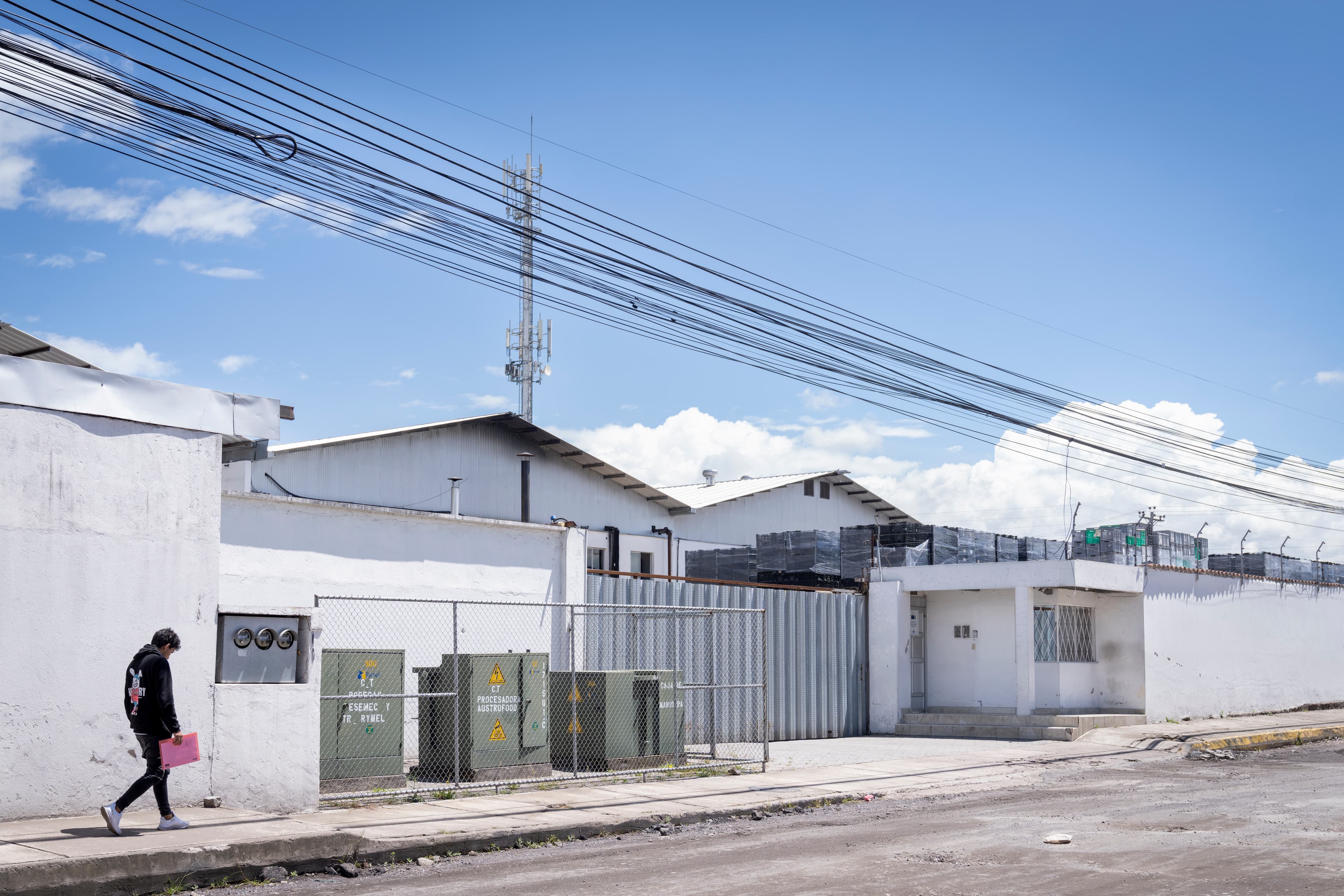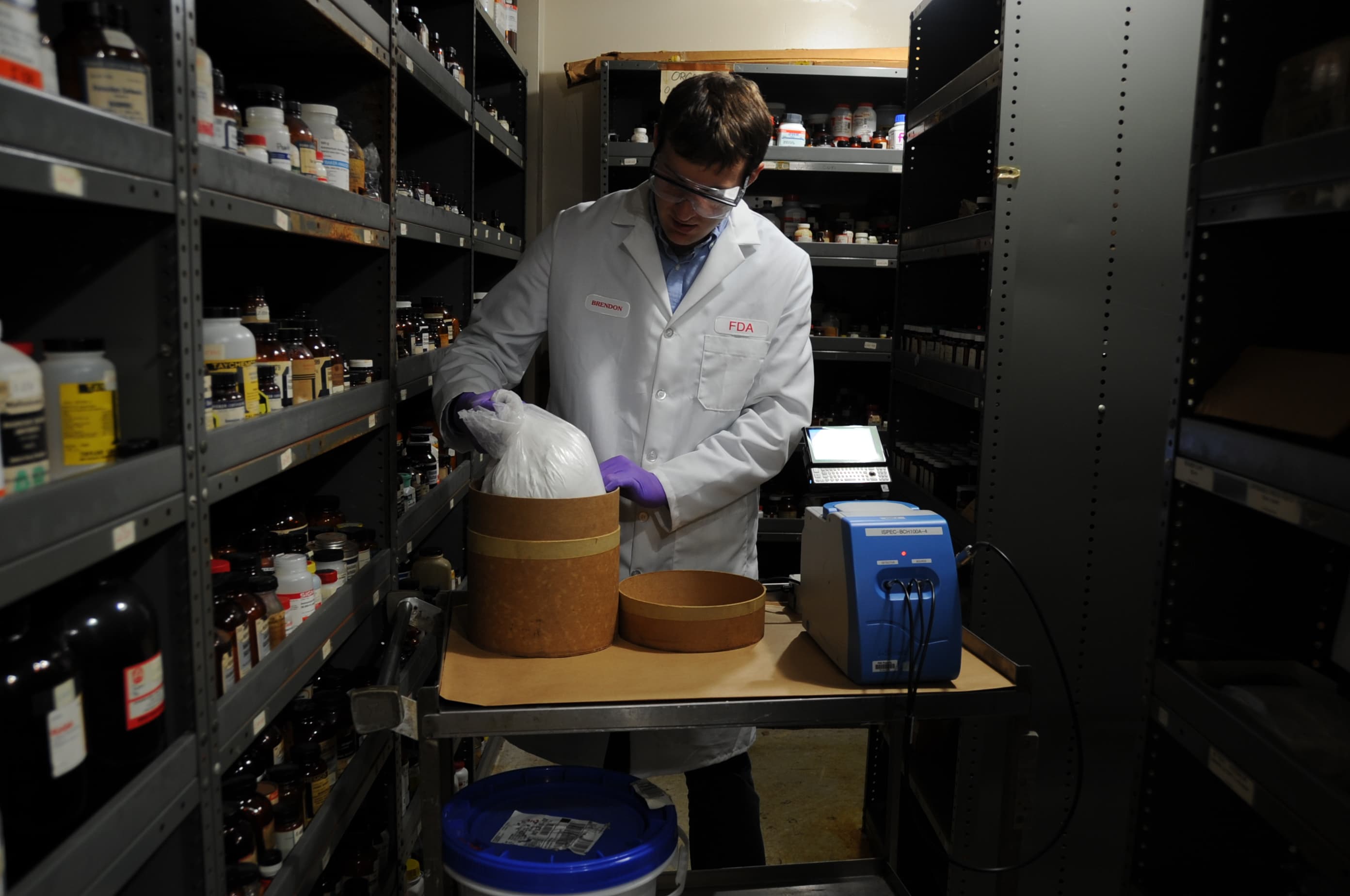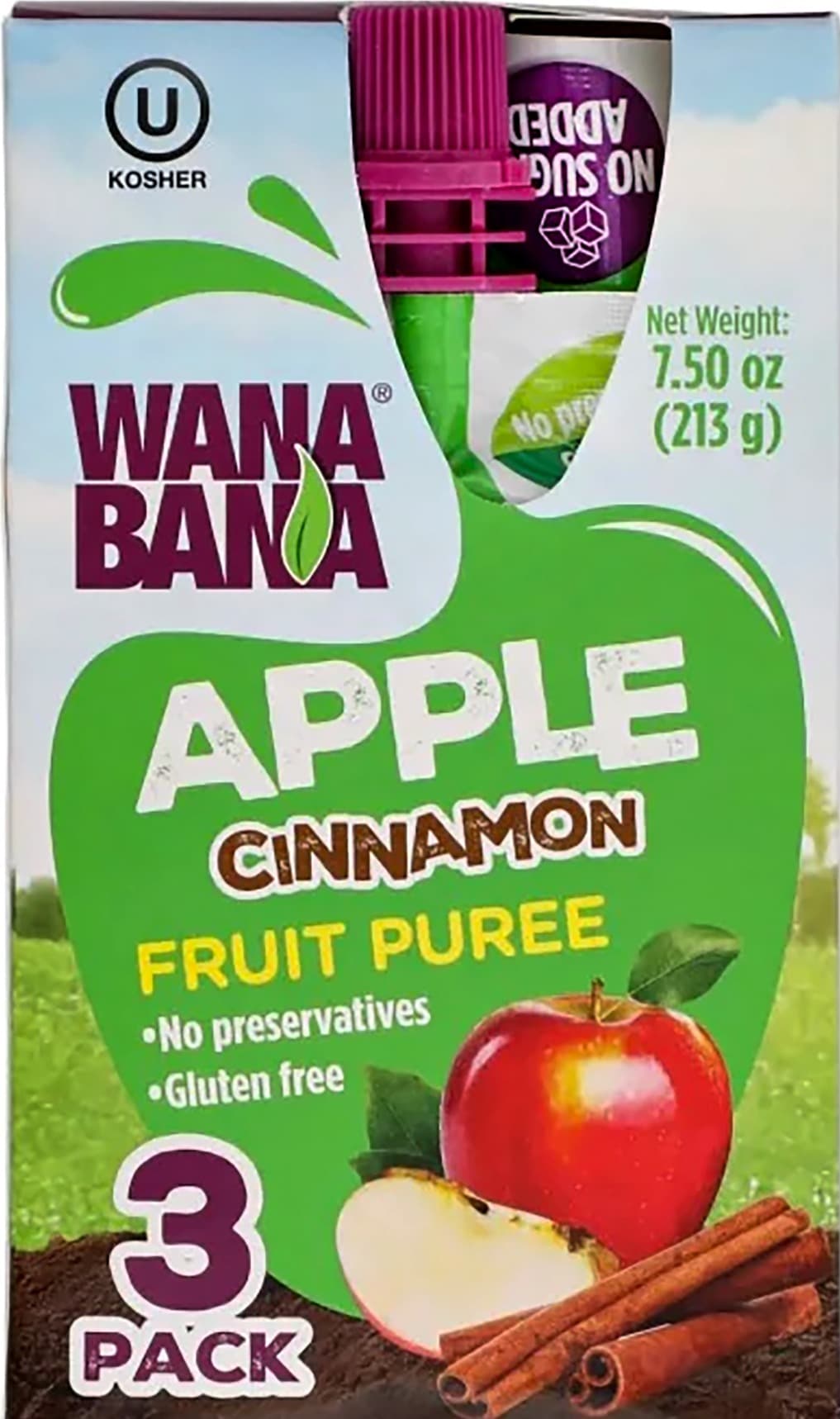This story was reported in collaborations with The New York Times and El Universo.
Cinnamon-flavored applesauce pouches sold in grocery and dollar stores last year poisoned hundreds of American children with extremely high doses of lead, leaving anxious parents to watch for signs of brain damage, developmental delays and seizures.
The U.S. Food and Drug Administration, citing Ecuadorian investigators, said a spice grinder was likely responsible for the contamination and said the quick recall of three million applesauce pouches protected the food supply.
But hundreds of pages of documents obtained by The Examination, in collaborations with The New York Times and El Universo, along with interviews with government and company officials in multiple countries, show that in the weeks and months before the recall, the tainted applesauce sailed through a series of checkpoints in a food safety system meant to protect American consumers.
The documents and interviews offer the clearest accounting to date of the most widespread toxic exposure in food marketed to young children in decades. Children in 44 states ate the tainted applesauce, some of which contained lead at extraordinarily high levels.
Time and again, the tainted cinnamon went untested and undiscovered, the result of an overstretched FDA and a food safety law that gives companies, at home and abroad, wide latitude on what toxins to look for and whether to test.
“It’s amazing in a bad sense what a catastrophic failure this was,” said Neal Fortin, director of the Institute for Food Laws and Regulations at Michigan State University. “Largely, the food supply regulatory system is based on an honor system.”
The cinnamon originated in Sri Lanka and was shipped to Ecuador, where it was ground into a powder. It was probably there, the FDA has said, that the cinnamon was likely contaminated with lead chromate, a powder that is sometimes illegally used to tint or bulk up spices.
The ground cinnamon was then sold, bagged and sold again to a company called Austrofood, which blended it into applesauce and shipped pouches to the United States. It was sold under the brand name WanaBana and various generic store labels.

Austrofood never tested the cinnamon or its tainted applesauce before shipping it to the United States. The company said it relied on a certificate from a supplier saying the cinnamon was virtually lead free, records show. In a statement, the supplier, Negasmart, did not discuss that certification but said it had complied with all regulations and quality standards.
The FDA can inspect overseas food companies that ship to the United States, but even as food imports soared to record levels in 2022, international inspections fell far short of targets set by law.
American inspectors had not visited Austrofood in five years, records show.
“Companies have the responsibility to take steps to assure that the products they manufacture are not contaminated with unsafe levels of heavy metals,” Jim Jones, the top FDA food official, said in a statement. “The agency’s job is to help the industry comply and hold those who evade these requirements accountable, as appropriate.”
The FDA says it has no authority to investigate far down the international supply chain. Records show that the Ecuadorian government had the authority but not the capacity. Ecuadorian regulators had never before tested cinnamon for toxins and, when the FDA called looking for help, nearly half of the government’s lab equipment was out of service, said Daniel Sánchez, the head of Ecuador’s food safety agency.
Private safety audits commissioned by American importers are supposed to provide another layer of protection. But audits typically look only for the hazards that the importers themselves have identified.
None of the importers would say whether they considered lead a risk or tested for it and it is unclear what, if any, steps they took. But none blocked the applesauce. Records show one auditor gave the applesauce maker an A+ safety rating in December, as American children were being poisoned.
The FDA has the power to test food arriving at the border. There is no indication that anyone tested the applesauce when it arrived at ports in Miami and Baltimore. Inspectors conduct about half as many such tests as they did a decade ago.
The FDA said it planned to analyze the incident and whether it needs to seek new powers from Congress to prevent future outbreaks.

Federal regulations have warned for years about the risk of tampering with food ingredients.
Changes to the food safety system were born out of a late 2000s scandal in China, where people used cheap, toxic melamine powder in place of protein powder in baby formula and pet food. Six babies in China and hundreds of dogs in the United States died.
As new laws on imported food took shape, lobbyists for grocery stores and food companies worked to weaken them. Scott Faber, a former lobbyist for the Grocery Manufacturers Association, recalls fending off proposals for more sampling, testing and reporting.
“Our argument at the time was that too much product would be destroyed if you had to do more testing and sampling,” Faber said. “And clearly babies and toddlers are paying the price for the industry’s success.” He is now a senior official at the Environmental Working Group, where he advocates stricter oversight of the food supply.
Heather Garlich, a spokeswoman for the food industry association FMI, declined to comment on the applesauce recall. “The U.S. is a global leader in food safety due to strong governmental oversight, critical public-private partnerships, and industry initiatives,” Garlich said.
Subscribe to our newsletter
Global health reporting, straight to your inbox
Food safety policy is always a balancing act. It would be impossible for FDA agents to open every imported crate of produce or spices and test for every possible contaminant. Every new requirement on companies adds cost to the food.
But critics like Faber say that the FDA has ceded too much oversight to the companies.
The Food Safety Modernization Act, signed into law in 2011 by President Barack Obama, gave the FDA the power to recall food, trace produce and reject food from foreign companies that turn away American inspectors.
One major change was to require importers to audit their suppliers. Exactly how those companies acted during the applesauce incident remains unclear. FDA data shows that thousands of importers do not audit appropriately.
The law did not come close to putting the FDA, which oversees shelf-stable food, cheese and fresh produce, on par with the Department of Agriculture, the other major food regulator. Agriculture inspectors work inside every American meat-processing plant and allow meat imports only from countries with rigorous safety systems.
The FDA asked Congress in 2022 for the authority to set heavy-metal limits and require baby-food makers to test for them — changes that might have prevented last year’s poisoning. Congress did not act.
A mother demands answers

The tainted applesauce might have gone unnoticed for even longer had it not been for a family in North Carolina.
Early last summer, Nicole Peterson and Thomas Duong were alarmed by their young children’s blood-lead levels in a routine screening. Within weeks, the levels had doubled.
Peterson said the couple worked with the local health department as they tried to determine what could be hurting their children. We “weren’t sleeping and we’re not eating — like this is driving us crazy,” said Peterson. She and her husband are suing Dollar Tree, where they bought the applesauce, and WanaBana, a U.S. distributor led by Austrofood officers.
A Dollar Tree spokeswoman said the company is committed to the safety of the products it sells. Austrofood said that it had relied on its supplier’s certification and that none of its other products have been recalled.
Their 3-year-old daughter, a fierce, bright girl who loves twirly dresses and nail polish, had a blood-lead level of 24 micrograms per deciliter, nearly seven times the Centers for Disease Control and Prevention’s level of concern. Her younger brother, an easygoing toddler who loves noisy trucks and dance music, had reached a level of 21.
Public health investigators searched their home and day care, but failed to find the source. When the parents’ blood tests came back normal, they began to suspect one food that only the children ate: foil pouches of cinnamon applesauce.
North Carolina health officials tested them and found extraordinarily high lead levels.
That prompted the FDA to act.
Searching for the source
In late October, Austrofood recalled millions of applesauce pouches. The FDA has said it believes that this measure eliminated the tainted cinnamon from the U.S. food supply.
The CDC estimates that more than 400 infants and toddlers were poisoned. The median test result was six times the level found in the water crisis caused by lead pipes a decade ago in Flint, Michigan.
The exposure in Flint was more sustained, and its long-term effects have proved difficult to quantify. But years later, the number of students in the city who qualified for special education doubled.
Earlier this month, the FDA said that Ecuadorian investigators believe the cinnamon was likely contaminated by Carlos Aguilera, who ran a spice mill. The Ecuadorian health agency filed an administrative complaint against Aguilera, saying he had operated without a permit and used broken machinery that increased the risk of impurities, records show. The complaint is pending.
Ecuadorian officials took packaged cinnamon from Aguilera’s customers that tested positive for lead, according to inspection reports and interviews.
But investigators found no contaminated cinnamon at Aguilera’s plant, records show. In an interview with reporters, he denied adding lead chromate.
Austrofood is not explicitly required to test its products for lead. Under FDA regulations, companies must only identify likely food safety hazards and develop plans to address them.
Austrofood had a plan, but lead was not among its anticipated risks, according to FDA records.
After the lead poisoning, the FDA cited Austrofood for failing to identify lead as a hazard, agency records show.
Where was the FDA?

The industry was never supposed to entirely police itself. The food-safety law called for the FDA to increase overseas oversight and conduct about 19,000 international food inspections annually.
The agency never came close to that target. Last year, records show that regulators conducted about 1,200 overseas inspections — visiting less than 1%of FDA-registered international food makers.
When the Government Accountability Office flagged the problem in 2015, the FDA cited insufficient funding and questioned “the usefulness of conducting that many inspections.” The accountability office recently said it was still waiting for the FDA to say what it considered the appropriate number of inspections.
U.S. officials inspected Austrofood in 2019. It is not clear what testing they conducted, but trade records show that the company was not exporting cinnamon products to the United States, so the spice was likely not a factor in the inspection. Regulators found no problems that they advised fixing, records show.
Inspectors did not return until the lead poisoning was discovered nearly five years later.
There is no record of the FDA ever inspecting the original source of the cinnamon, the Sri Lanka-based Samagi Spice Exports. Nanda Kohona, the company’s marketing director, said the company conducted its own lead tests.
None of the other companies in the cinnamon supply chain were eligible for FDA inspections because they do not ship directly to the United States.
“I think the missing piece is having a totally independent regulatory agency checking up on the process, going in and doing inspections,” said Sarah Sorscher, director of regulatory affairs for the Center for Science in the Public Interest.
Peterson, the North Carolina mother whose persistence touched off the search, said she was relieved when the applesauce was discovered as the source of lead. But her family is now watching closely for developmental delays in their children.
Even low levels of lead exposure in children have been linked to hyperactivity, mood swings and deficits in reading and social skills.
“We just hope at the end of the day that our kids just are healthy and can stay healthy,” she said.
“They shouldn’t have to worry about what they eat. No one should.”
Genevieve Glatsky, Emiliano Rodríguez Mega and Paúl Mena Mena contributed reporting.

